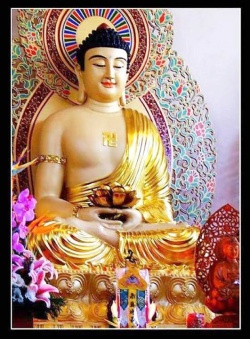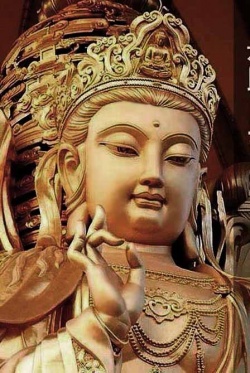Vācaspati Miśra
Vācaspati Miśra, c. 10th century CE, was a gṛhastha scholar from the Mithilā region in modern Bihar state (bordering Nepal).
He was knowledgeable in several disciplines connected to the Dharma and is traditionally hailed as a sarva-tantra-svatantra.
The uniqueness of Vācaspati Miśra was his ability to write on almost every darśana with the perspective of an insider.
This is perhaps unparalleled in the history of the Dharma.
Perhaps his most well-known work is the Bhāmatī, an exposition of Adi Shankaracharya's Brahmasūtra Bhāṣya.
Tradition holds that he was so engrossed in his scholarly endeavours that he paid no attention to his household responsibilities.
Throughout this period his wife, Bhāmatī, served him dutifully without making any demands on his time.
In recognition of her silent contribution, he named his magnum opus after her.
The Bhāmatī has been an influential text with many sub-commentaries having appeared over the centuries.
Together with its sub-commentaries, the Bhāmatī forms a distinct intellectual current within Advaita-Vedanta, known as the Bhāmatī school
Vācaspati Miśra (900–980 CE) was an Indian philosopher who founded one of the main Advaita Vedanta schools, the Bhāmatī school (named after his commentary on Śankara's Brahma-sūtra-bhāṣya), and whose work was an important forerunner of the Navya-Nyāya system of thought.
Vācaspati lived near the frontier between India and Nepal (what is now Vachaspati Nagar (Andhra Thardhi), Madhubani).
The details of his life have been lost, though he is said to have named one of his works after his wife, Bhāmatī.
He wrote commentaries on the main works of all the major Hindu schools of thought at the time, as well as one non-commentary, Tattvabindu.
In Tattvabindu, Vācaspati examines four competing theories of linguistic meaning:
- Mandana Misra's (sphoṭavāda), which involves grasping the meaning of a word or sentence by perceiving a sphoṭa or single holistic sound, which is distinct from the elements (sounds or characters) that make up the word or sentence;
- the Nyāya theory which involves concatenating the memory traces (saṃskāra) of momentary components of a word or sentence when we hear the final momentary component;
- the similar Mīmāmsā theory, according to which our grasp of the meaning of a sentence lies in the memory traces created by the words; and
- the Prābhākara Mīmāmsā theory, anvitābhidhānavāda, according to which the meaning of a sentence is derived from the meanings of its words, each of which has an individual meaning in the sentence as well as having syntactic relations with the other words — no sphoṭa or memory traces are required.
After examining each of these theories, Vācaspati presents his own theory, abhihitānvayavāda, according to which understanding of the meaning of a whole sentence is reached by inferring it, in a separate act of lakṣanā or implication, from the individual meanings of the constituent words.
His well known works are:
- Bhāmatī: A commentary on Adi Shankaracharya's Brahmasūtra Bhāṣya (Advaita-Vedanta)
- Tattvakaumudi: A commentary on the Sāṃkhya-kārikā-s of Īśvara Kṛṣṇa
- Tattvavaiśāradi: A commentary of the Yogasūtra-s (of Patañjali) and the Yogasūtra Bhāṣya of Vyāsa.
- Nyāyasūcīnibandha: A treatise on Nyāya.
- Nyāyavārttika-tātparya-tīkā
- An explanatory treatise on the Nyāyavārttika of Uddyotakara.
- Nyāyakaṇikā: A commentary on Maṇḍana Miśra's Vidhiviveka (Mīmāṃsā)
- Tattvabindu: A treatise on grammar and language.
</poem>


